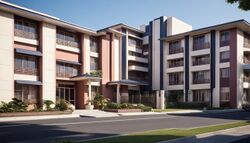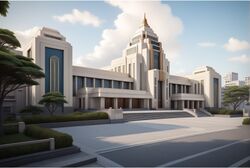Kamuran Architecture: Difference between revisions
Jump to navigation
Jump to search
No edit summary |
|||
| Line 6: | Line 6: | ||
== Residential Housing == | == Residential Housing == | ||
{| class="wikitable" | |||
|+ | |||
! colspan="3" |Examples | |||
|- | |||
|[[File:Affluent housing project in Penkhu.jpg|center|frameless|250x250px]] | |||
|[[File:Clan housing in XRN.jpg|center|frameless|250x250px]] | |||
|[[File:Public housing XRN.jpg|center|frameless|250x250px]] | |||
|- | |||
|High income clan housing project in a affluent ward of Penkhu. | |||
|Middle income clan housing complexes on the outskirts of Penkhu. | |||
|Low income public housing project in an urban area. | |||
|} | |||
== Public Buildings == | == Public Buildings == | ||
Revision as of 19:05, 11 January 2024
General features of Kamuran architecture
Historical Development
Contemporary Styles
Residential Housing
| Examples | ||
|---|---|---|
 |
 |
 |
| High income clan housing project in a affluent ward of Penkhu. | Middle income clan housing complexes on the outskirts of Penkhu. | Low income public housing project in an urban area. |




